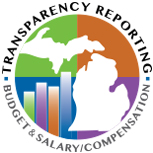Proehl said her students are more motivated and engaged when using these tools during math lessons and often even choose to use them during quiet choice or free choice. “The fact that students are choosing to use these tools on their own time says a lot. It’s exciting to see.”
The hands-on devices help students better understand not only basic addition and subtraction but also higher-level concepts involving missing addends, making ten to add, and other mental math strategies. “It’s difficult to visualize the movement of objects on paper. Students need to be able to physically manipulate numbers,” she said.
The $988 grant was awarded last spring to purchase an assortment of math manipulatives and games ready for use this fall in her classroom. There are dry-erase number lines, a colorful counting rug, and 10 frames with magnetic red and yellow chips to show addition and subtraction problems. There are dice and spinners that can be adapted to different learning situations, as well as a variety of magnetic resources for teaching number bonds, number lines, place value, and other first-grade math concepts. Finally, there are addition and subtraction wraps and Hot Dots for independent, self-correcting practice.

